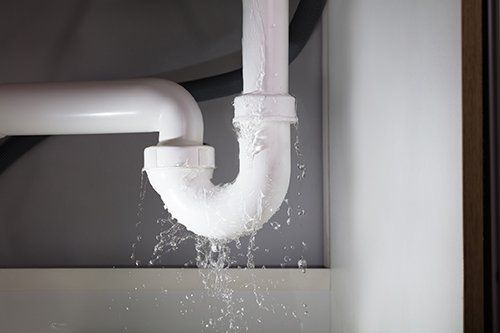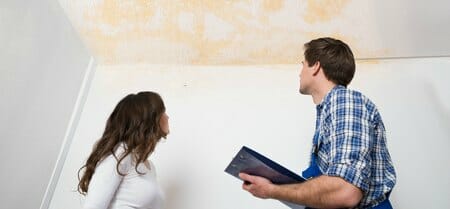The House's Common Common Leak Factors: Analysis
The House's Common Common Leak Factors: Analysis
Blog Article
We've stumbled upon the article pertaining to Top Causes of Home Water Leaks down the page on the web and concluded it made good sense to write about it with you over here.

Leaks not only create waste of water yet can additionally trigger unnecessary damage to your residence and also advertise unwanted natural development. Water leakages might go undetected because many of the pipework in our house is hidden. By recognizing and looking for day-to-day situations that trigger leakages, you can safeguard your residence from future leakages and also unnecessary damages. Today, we will check out 6 leak triggers that might be creating your pipelines to drip.
Trespassing roots
Many water leakages start outside the home instead than inside it. You might observe damp spots or sinkholes in your yard, and also that might imply that tree roots are attacking water lines causing water to leak out.
Rusty water supply
As time passes by, your plumbing system ages and rust such as corrosion might begin gnawing the pipelines. This may be the source of staining or bending on your pipes. This requires an examination with your plumber right away. If our plumbing system is old, take into consideration changing the pipes considering that they go to a higher risk of corrosion than the more recent designs.
Faulty Pipeline Joints
The point at which your pipelines attach is often the weakest web link in the waterline. Pipeline joints can weaken over time, leading to water leakages. Regrettably, the majority of pipe joints are not quickly noticeable. If you have noisy pipes that make ticking or banging sounds, specifically when the warm water is activated, your pipe joints are probably under a lot of pressure. It is suggested to have your plumber evaluate your system annually.
Instantaneous temperature adjustments.
Extreme temperature adjustments in our pipes can cause them to broaden and also get unexpectedly. This expansion and contraction might trigger cracks in the pipelines, particularly if the temperature level are below cold.
Poor Water Connectors
Sometimes, a leak can be brought on by loosened hose pipes and also pipes that provide your home appliances. Usually, shifting is what creates the loose water Links. You might discover in the case of a washing equipment, a hose pipe might spring a leakage because of shaking throughout the spin cycle. In case of a water links leakage, you might observe water running directly from the supply line or puddles around your home appliances.
Obstructed Drains
Blocked drains might be irritating and inconveniencing, yet they can occasionally end up triggering an overflow leading to burst pipes. Maintain removing any kind of products that may go down your drains pipes that can obstruct them to stay clear of such hassles.
All the above are reasons for leakages however not all water leakages result from plumbing leakages; some leakages may come from roof leakages. All leaks ought to be fixed instantly to avoid water damage.
Leaks not just create waste of water however can likewise cause unnecessary damages to your home as well as advertise undesirable natural growth. By looking and comprehending for day-to-day scenarios that cause leakages, you can protect your house from future leakages and also unnecessary damage. Today, we will look at 6 leak causes that may be creating your pipes to trickle.
At times, a leak can be caused by loosened pipes and also pipelines that provide your home appliances. In case of a water connections leakage, you may notice water running straight from the supply line or puddles around your appliances.
How To Check For Water Leak In Your Home
How To Check for Leaks
The average household's leaks can account for nearly 10,000 gallons of water wasted every year and ten percent of homes have leaks that waste 90 gallons or more per day. Common types of leaks found in the home are worn toilet flappers, dripping faucets, and other leaking valves. These types of leaks are often easy to fix, requiring only a few tools and hardware that can pay for themselves in water savings. Fixing easily corrected household water leaks can save homeowners about 10 percent on their water bills.
To check for leaks in your home, you first need to determine whether you're wasting water and then identify the source of the leak. Here are some tips for finding leaks:
Take a look at your water usage during a colder month, such as January or February. If a family of four exceeds 12,000 gallons per month, there are serious leaks.
Check your water meter before and after a two-hour period when no water is being used. If the meter changes at all, you probably have a leak.
Identify toilet leaks by placing a drop of food coloring in the toilet tank. If any color shows up in the bowl after 10 minutes, you have a leak. (Be sure to flush immediately after the experiment to avoid staining the tank.)
Examine faucet gaskets and pipe fittings for any water on the outside of the pipe to check for surface leaks.
Undetected water leaks can happen without the home or business owner even realizing. If you suspect a water leak, but not able to find the source. It is time to contact a professional water leak detection service, The Leak Doctor.
How To Find a Water Leak In Your Home
https://www.leakdoctor.com/blog/How-To-Check-For-Water-Leak-In-Your-Home_AE197.html

Hopefully you liked our piece on How to detect water leaks in your home. Thank you for finding the time to read through our posting. Make sure you take the opportunity to share this blog if you enjoyed it. I am grateful for your time. Come back soon.
Quality first, dial! Report this page